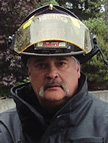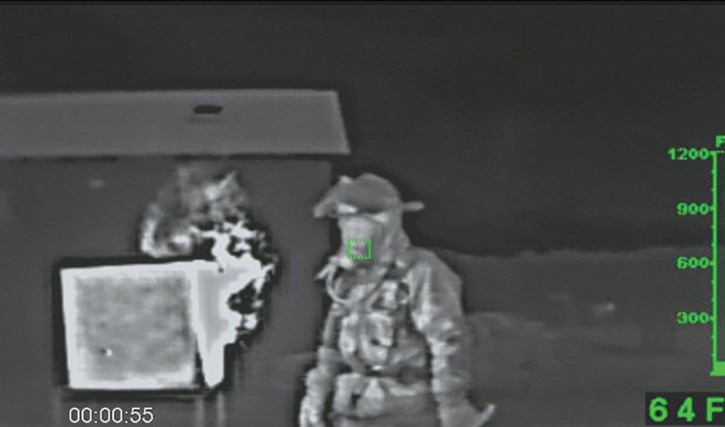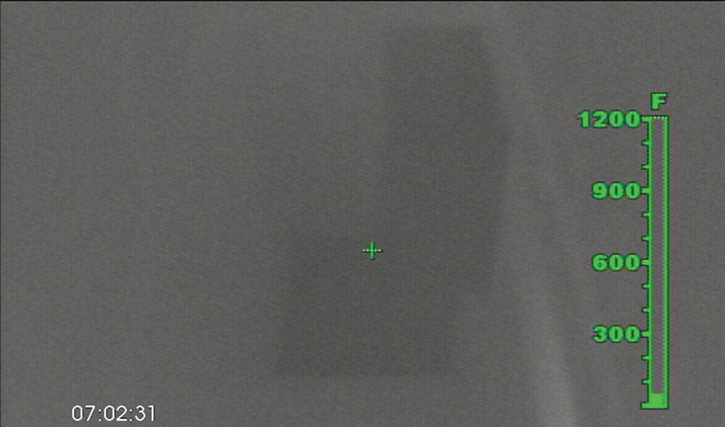
Thermal Imaging | Manfred Kihn
I recently had an opportunity to participate in a large, live-fire training weekend and engaged with many firefighters about thermal imaging (TI). To my surprise, they had a lack of knowledge about their own fire departments’ TI equipment. Why is that? Probably because the TIs are not being used.

I’m sure this topic has been covered in other articles, but after attending this training I felt compelled to revisit the reasons a TI is a critical tool for firefighters. During the training, I had time to engage with my fellow firefighters and I took this opportunity to ask them a few questions about their TI.
Here are the questions I asked and the answers I received:
Question: What brand of TI do you have?
Answer: Most of the firefighters were not sure of the brand.
Q: What are the three basic colors in thermal imaging?
A: Yellow, orange and gray.
This is incorrect. The correct answer is white, black, and grayscale< em>. Here are the meanings of these colors: White is hot, black is cold, and everything in between is shades of gray. In addition to these colors, today’s TIs are equipped with a High Heat Colorization function based on their temperature ranges and produce advanced colorization that shows yellow, orange, and red on the TI screen.
Q: How many gain states does your TI have?
A: We don’t know!
This is important to know. The correct answer is two modes: High Gain and Low Gain. Photo 1 shows the TI in a High Gain state and photo 2 shows Low Gain displayed in the upper left corner indicated by a green box with a green triangle inside. It’s important to note that some manufacturers offer a third gain state.
Q: Can you use a TI on every call that you respond to?
A: Ninety percent of the firefighters were nonbelievers.
The correct answer is to think outside the box and take your blinders off. You can use a TI not only at night but in daytime conditions as well. Just use your TI for five minutes to learn how much information this valuable tool is giving you that you cannot see with the naked eye.
Related Content
Q: When was the last time you trained using your TI?
A: It has been a long time!
The correct answer is to consider using your TI on all training exercises no matter what it is that you are doing. You as a firefighter have an obligation to do the best job that you can do using all the tools given to you, which includes a TI.
Q: What is a black hole?
A: I do not know.
It is critical to a firefighter’s safety to know what a black hole is when using a TI. A black hole could be just a puddle of water on the floor or it could be a hole in the floor that the cooler air is coming up through. You, the firefighter, need to be diligent with your tools to ensure structural integrity and safety. The TI is telling you something but you cannot rely 100 percent on that information until you investigate thoroughly using the manual way. If we didn’t have a TI, we would be checking the floor with an ax, a halligan, or a pike pole to ensure the surface is stable. To ensure the crew’s safety, we need to interpret the image we see on the TI display and still verify the surface’s integrity. After establishing physically that it is a solid surface, we can use the TI to monitor color changes to understand if the integrity of the structure is in jeopardy. In photo 3, our TI is looking at a basement floor, but it’s not indicating that there are stairs. Verifying what the TI is showing you is critical to staying safe.

1 Photos courtesy of Bullard.


Q: When was the last time your batteries were replaced?
A: The firefighters didn’t have a clue!
Please, do me a favor (this is for volunteers and full-time fire departments as well): Next time when you are on shift, take out your TI and turn it on. Now, put it down and complete your truck check. This should take about 30 to 45 minutes. Then go back to check your TI. Is it still on, is it in sleep mode, or is it off? If it’s still on, then that’s a good thing. If it’s off, then that’s not a good thing. Pull out your battery and check the date on it. Anything greater than two years I would suggest getting replacement batteries.
What I have found through my travels is that the imager gets turned on and off at the beginning of a shift and the firefighter checks it off as a working TI. Then, the big call comes in and it’s all hands on deck and the TI is pulled off the truck, turned on, and the battery goes dead in about five to 15 minutes. No batteries last forever. Maintenance is performed on self-contained breathing apparatus, rescue tools, and batteries in flashlights, but the TI is neglected. When the TI goes dead, it gets tossed aside and the firefighters blame the manufacturer. It’s not the manufacturer’s fault when you have a five- to seven-year-old battery. The blame is on you! If the manufacturer tells you that you should get a four-hour run time on your TI and you are only getting 20 minutes, do the math! If the Date of Manufacture on the battery is greater than two years, it’s time to replace your battery.
A TI helps firefighters see where the human eye can’t. It’s a powerful tool that takes training to fully understand its many features and benefits. Just as firefighters take training seriously in fire school, using a TI requires the same attention to detail to understand the technology to increase a crew’s chances of staying safe.
Manfred Kihn is a 19-year veteran of the fire service, having served as an ambulance officer, emergency services specialist, firefighter, captain, and fire chief. He has been a member of Bullard’s Emergency Responder team since 2005 and is the company’s fire training specialist for thermal imaging technology. He is certified through the Law Enforcement Thermographers’ Association (LETA) as a thermal imaging instructor and is a recipient of the Ontario Medal for Firefighters Bravery. If you have questions about thermal imaging, you can e-mail him at manfred_kihn@bullard.com.

